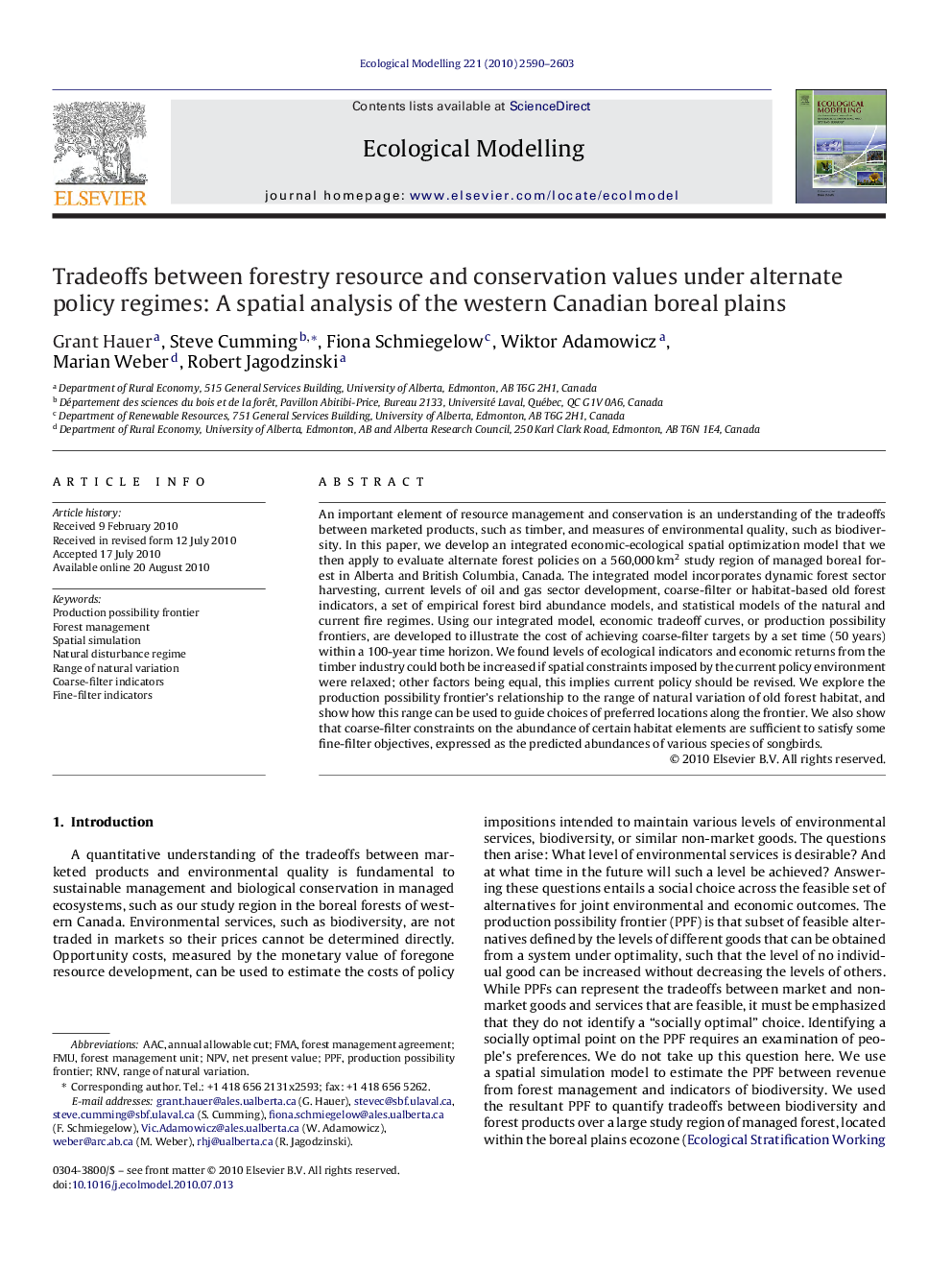| Article ID | Journal | Published Year | Pages | File Type |
|---|---|---|---|---|
| 4377247 | Ecological Modelling | 2010 | 14 Pages |
An important element of resource management and conservation is an understanding of the tradeoffs between marketed products, such as timber, and measures of environmental quality, such as biodiversity. In this paper, we develop an integrated economic-ecological spatial optimization model that we then apply to evaluate alternate forest policies on a 560,000 km2 study region of managed boreal forest in Alberta and British Columbia, Canada. The integrated model incorporates dynamic forest sector harvesting, current levels of oil and gas sector development, coarse-filter or habitat-based old forest indicators, a set of empirical forest bird abundance models, and statistical models of the natural and current fire regimes. Using our integrated model, economic tradeoff curves, or production possibility frontiers, are developed to illustrate the cost of achieving coarse-filter targets by a set time (50 years) within a 100-year time horizon. We found levels of ecological indicators and economic returns from the timber industry could both be increased if spatial constraints imposed by the current policy environment were relaxed; other factors being equal, this implies current policy should be revised. We explore the production possibility frontier's relationship to the range of natural variation of old forest habitat, and show how this range can be used to guide choices of preferred locations along the frontier. We also show that coarse-filter constraints on the abundance of certain habitat elements are sufficient to satisfy some fine-filter objectives, expressed as the predicted abundances of various species of songbirds.
